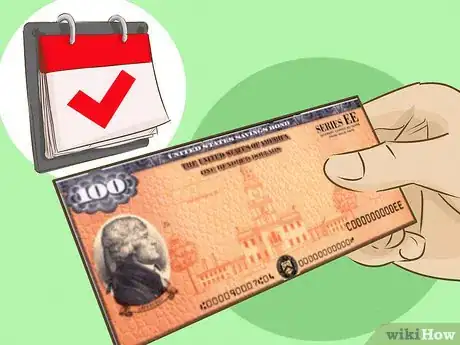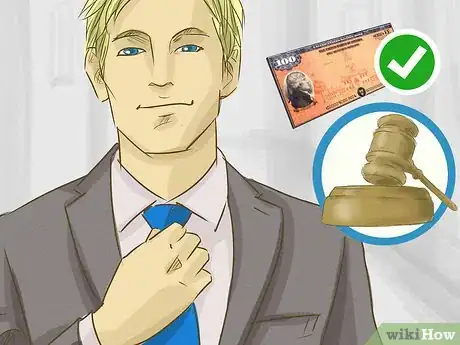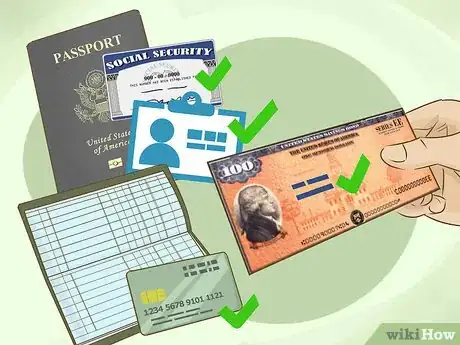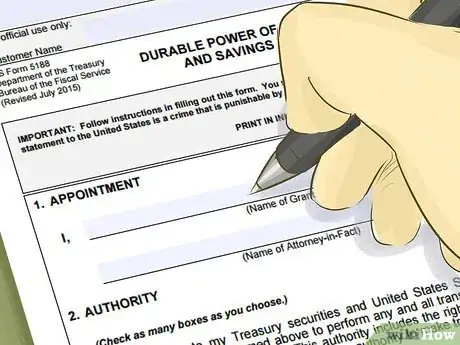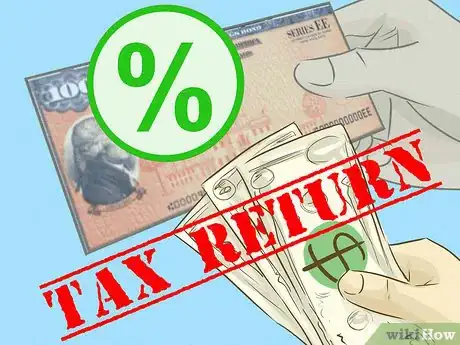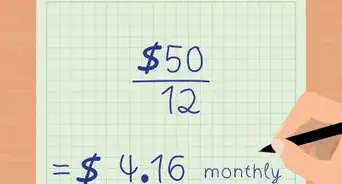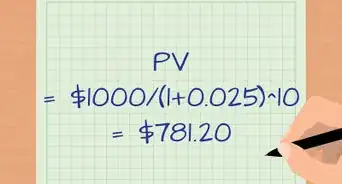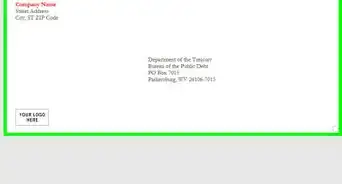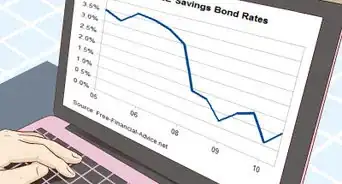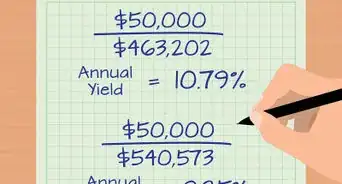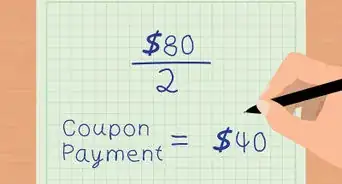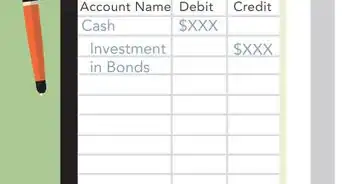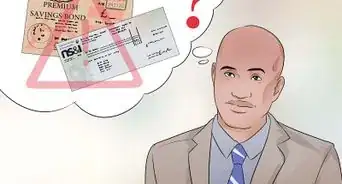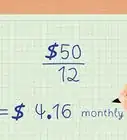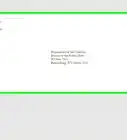This article was co-authored by Ara Oghoorian, CPA. Ara Oghoorian is a Certified Financial Accountant (CFA), Certified Financial Planner (CFP), a Certified Public Accountant (CPA), and the Founder of ACap Advisors & Accountants, a boutique wealth management and full-service accounting firm based in Los Angeles, California. With over 26 years of experience in the financial industry, Ara founded ACap Asset Management in 2009. He has previously worked with the Federal Reserve Bank of San Francisco, the U.S. Department of the Treasury, and the Ministry of Finance and Economy in the Republic of Armenia. Ara has a BS in Accounting and Finance from San Francisco State University, is a Commissioned Bank Examiner through the Federal Reserve Board of Governors, holds the Chartered Financial Analyst designation, is a Certified Financial Planner™ practitioner, has a Certified Public Accountant license, is an Enrolled Agent, and holds the Series 65 license.
There are 11 references cited in this article, which can be found at the bottom of the page.
This article has been viewed 374,236 times.
If you have ever received U.S. savings bonds as gifts or purchased them yourself as a low-risk savings vehicle, you may be wondering about your options for redeeming them. Redeeming savings bonds is simple. You can redeem them at a local bank, a Federal Reserve Bank, or online.
Steps
Preparing to Redeem Your Savings Bonds
-
1Make sure the bond is eligible for redemption. You can redeem EE, E, and I savings bonds 12 months after you purchase them. However, you will pay penalties and lose accrued interest if you redeem them before they fully mature.[1]
- Redeeming an I or EE bond before it is 5 years old will result in the loss of the last 3 months of accrued interest.[2]
- I and EE bonds earn interest for 30 years if you don't redeem them. All bonds are guaranteed at least their face value by 20 years.
-
2Redeem the bond at the correct time of year. If you are cashing in a savings bond issued in April 1997 or earlier, then you need to redeem it in the correct time of year to make sure you don't lose interest. These bonds accrue interest every 6 months, so if you redeem it near the end of the 6 month period, you will lose that 6 month period's interest. Determine which month the bond was issued in. Redeem the bond in that month or 6 months from the issue month.
- For example, if your bond was issued in January, you want to redeem the bond in January or July. If the bond was issued in October, you want to redeem it in either October or April.
Advertisement -
3Determine if you are eligible to redeem the bond. To redeem a savings bond, you must be the owner, co-owner, or entitled individual. An entitled individual includes someone with Power of Attorney or a Legal Guardian.
- If you are a beneficiary for someone deceased, you must bring a death certificate to provide proof you can cash the bond.
- If you are a parent or guardian, you must bring a birth certificate or other identification materials if you wish to cash the bond for your child.[3]
- An owner or co-owner can cash the bond without the knowledge of the other person.[4]
Redeeming Your Savings Bond
-
1Visit your local bank. Go to your local bank to redeem your savings bond. If you are a customer, you may only have to have an active account and proper identification. If you are not a member of the bank, the bank may not redeem the bonds, or they might place restrictions on them, like limiting the amount they will cash.[5]
- Contact your bank before redeeming them. Find out if they redeem savings bonds, what their dollar limit is, and what documents you need to redeem the bonds.
- If the bank won't redeem your bonds, try the Federal Reserve Bank. You can do this electronically or by mail.[6]
-
2Have the proper identification. Bring proper identification, such as a driver's license or a social security card. When redeeming the bond at your bank, the name on the bond, the name on your account, and the name on your identification need to match. You may have to have an account at the bank for at least 6 months. If you do not have an account, you will have to show a photo ID and provide a signature.
- You can also have an identifier take you to his bank where he has had an account for 6 months. The person with the account must have a legitimate connection to the person cashing the bond. For example, it cannot be landlord-tenant or a patron from a business. You both will be required to give name and address, relationship, and length of acquaintance.[7]
- You will have to sign the "Request for Payment" section of the bond. Your signature will have to match the signature on file. If you are at the bank with someone with an account, he will have to sign the "Request for Payment."
- The bank will write your account number on the back of the bond. They may also write the type of identification or your address on the back.
-
3Fill out a Power of Attorney form if you need to. If you are in a situation where the owner of the bond needs a Power of Attorney, such as the owner of the bond is in the hospital or home-bound, you can fill out the Power of Attorney form (PD F 5188). This form authorizes the person whose name is on the form to sell or cash the bonds.[8]
- Another way to do this is to submit a certified copy of the power of attorney to the bank. The Power of Attorney document must state explicitly that you can cash the savings bonds. The document must be notarized. If you do this, only a Federal Reserve Bank can cash the bonds.[9]
- This form is located through the Treasury Department website.
-
4Put in writing the child is too young to cash if cashing for a minor. If you are the parent of a child too young to sign the request form, you must provide proper identification that you are the parent.
- On the back of the bond, you will enter something like this: I certify that I am the parent of John Doe with whom John Doe resides/to whom legal custody has been granted. He is 3 years old and is not of sufficient understanding to make this request. Nick Doe on behalf of John Doe.[10]
- If a child is old enough to sign his or her own name, they can go to the bank and sign the bonds while accompanied by an adult.[11]
-
5Redeem the bonds electronically.[12] To redeem your bonds electronically, go to the United States Treasury online marketplace, TreasuryDirect.gov. TreasuryDirect.gov gives individuals the ability to redeem their electronic savings bonds online and transfer the proceeds to a bank account. You may also request a check for the proceeds.[13]
- TreasuryDirect.gov also provides a service which allows you to convert your savings bond certificates into electronic savings bonds for easier filing and tracking. This will relieve you of the burden of storing your certificates. It makes redeeming bonds significantly easier.
-
6Claim earned interest on your tax return. Savings bonds earn interest during each year of ownership. For Series E/EE bonds, there is a choice for how to report interest as taxable income. Interest can be reported every year, but if this is done for one year, it must be reported every year until it reaches final maturity or until the bond is redeemed, whichever comes first. Otherwise taxes on all interest can be deferred completely until either the bond reaches final maturity or the bond is redeemed, whichever comes first.[14] That means that taxes on accrued bond interest may be due before the bond is redeemed. Interest is reportable as taxable income on line 8a of the federal Form 1040.
Expert Q&A
Did you know you can get expert answers for this article?
Unlock expert answers by supporting wikiHow
-
QuestionWhat's the benefit of EE savings bonds?
 Ara Oghoorian, CPAAra Oghoorian is a Certified Financial Accountant (CFA), Certified Financial Planner (CFP), a Certified Public Accountant (CPA), and the Founder of ACap Advisors & Accountants, a boutique wealth management and full-service accounting firm based in Los Angeles, California. With over 26 years of experience in the financial industry, Ara founded ACap Asset Management in 2009. He has previously worked with the Federal Reserve Bank of San Francisco, the U.S. Department of the Treasury, and the Ministry of Finance and Economy in the Republic of Armenia. Ara has a BS in Accounting and Finance from San Francisco State University, is a Commissioned Bank Examiner through the Federal Reserve Board of Governors, holds the Chartered Financial Analyst designation, is a Certified Financial Planner™ practitioner, has a Certified Public Accountant license, is an Enrolled Agent, and holds the Series 65 license.
Ara Oghoorian, CPAAra Oghoorian is a Certified Financial Accountant (CFA), Certified Financial Planner (CFP), a Certified Public Accountant (CPA), and the Founder of ACap Advisors & Accountants, a boutique wealth management and full-service accounting firm based in Los Angeles, California. With over 26 years of experience in the financial industry, Ara founded ACap Asset Management in 2009. He has previously worked with the Federal Reserve Bank of San Francisco, the U.S. Department of the Treasury, and the Ministry of Finance and Economy in the Republic of Armenia. Ara has a BS in Accounting and Finance from San Francisco State University, is a Commissioned Bank Examiner through the Federal Reserve Board of Governors, holds the Chartered Financial Analyst designation, is a Certified Financial Planner™ practitioner, has a Certified Public Accountant license, is an Enrolled Agent, and holds the Series 65 license.
Certified Financial Planner & Accountant
-
QuestionHow do I redeem savings bonds that were left to me by someone who is deceased?
 Michael R. LewisMichael R. Lewis is a retired corporate executive, entrepreneur, and investment advisor in Texas. He has over 40 years of experience in business and finance, including as a Vice President for Blue Cross Blue Shield of Texas. He has a BBA in Industrial Management from the University of Texas at Austin.
Michael R. LewisMichael R. Lewis is a retired corporate executive, entrepreneur, and investment advisor in Texas. He has over 40 years of experience in business and finance, including as a Vice President for Blue Cross Blue Shield of Texas. He has a BBA in Industrial Management from the University of Texas at Austin.
Business Advisor If you are the named survivor, simply take the bonds, adequate identification to prove you are the survivor, and proof of death of the original owner to a financial institution that deals with savings bonds. If the bonds passed to you through an estate, you will need a copy of the will or a statement of the executor acknowledging your right to the bonds in addition to the other information named previously.
If you are the named survivor, simply take the bonds, adequate identification to prove you are the survivor, and proof of death of the original owner to a financial institution that deals with savings bonds. If the bonds passed to you through an estate, you will need a copy of the will or a statement of the executor acknowledging your right to the bonds in addition to the other information named previously. -
QuestionMy brother and I were just informed 10 years after our father's death that he purchased U.S. savings bonds. Our stepmother refuses to give them to us unless we agree to give her half. What should I do?
 Michael R. LewisMichael R. Lewis is a retired corporate executive, entrepreneur, and investment advisor in Texas. He has over 40 years of experience in business and finance, including as a Vice President for Blue Cross Blue Shield of Texas. He has a BBA in Industrial Management from the University of Texas at Austin.
Michael R. LewisMichael R. Lewis is a retired corporate executive, entrepreneur, and investment advisor in Texas. He has over 40 years of experience in business and finance, including as a Vice President for Blue Cross Blue Shield of Texas. He has a BBA in Industrial Management from the University of Texas at Austin.
Business Advisor In some circumstances, the purchaser of the bonds names a beneficiary in the event of death. In that case, the named survivor can redeem the bonds at most financial institutions by providing adequate identification and proof of death. In your case, your father apparently purchased paper bonds that are in the possession of your stepmother. Without a named survivor, the bonds would be included in your father's estate and passed according to his will or by court action. Since your stepmother has possession, your best advice is to contact an attorney on the best way to proceed.
In some circumstances, the purchaser of the bonds names a beneficiary in the event of death. In that case, the named survivor can redeem the bonds at most financial institutions by providing adequate identification and proof of death. In your case, your father apparently purchased paper bonds that are in the possession of your stepmother. Without a named survivor, the bonds would be included in your father's estate and passed according to his will or by court action. Since your stepmother has possession, your best advice is to contact an attorney on the best way to proceed.
References
- ↑ http://treasurydirect.gov/indiv/research/indepth/ebonds/res_e_bonds_eeredeem.htm
- ↑ https://www.treasurydirect.gov/indiv/research/indepth/ibonds/res_ibonds_iredeem.htm
- ↑ https://www.treasurydirect.gov/forms/sav0022.pdf
- ↑ http://finance.zacks.com/coownership-vs-beneficiaries-savings-bonds-1654.html
- ↑ https://www.treasurydirect.gov/indiv/research/indepth/ebonds/res_e_bonds_eeredeem.htm#how
- ↑ https://www.treasurydirect.gov/forms/sav0022.pdf
- ↑ https://www.treasurydirect.gov/forms/sav0022.pdf
- ↑ https://www.treasurydirect.gov/forms/sav0105.pdf
- ↑ http://finance.zacks.com/cash-bonds-power-attorney-4128.html
- ↑ https://www.treasurydirect.gov/forms/sav0022.pdf
- ↑ https://www.treasurydirect.gov/forms/sav0022.pdf
- ↑ Ara Oghoorian, CPA. Certified Financial Planner & Accountant. Expert Interview. 11 March 2020.
- ↑ https://www.treasurydirect.gov/indiv/research/indepth/ebonds/res_e_bonds_eeredeem.htm#how
- ↑ https://www.treasurydirect.gov/indiv/research/indepth/ebonds/res_e_bonds_eetaxconsider.htm
- ↑ https://www.treasurydirect.gov/indiv/research/indepth/ebonds/res_e_bonds_eeredeem_disaster.htm
- ↑ http://treasurydirect.gov/indiv/tools/tools_treasuryhunt.htm
About This Article
To redeem a savings bond, visit your local bank and bring the bond and photo ID. If you don't have an account at the bank, you may need to also provide a signature. When you arrive, inform a representative at the bank that you'd like to redeem your bond. You can also redeem a savings bond online by visiting TreasuryDirect.gov. For help determining if your savings bond can be redeemed yet, keep reading!

